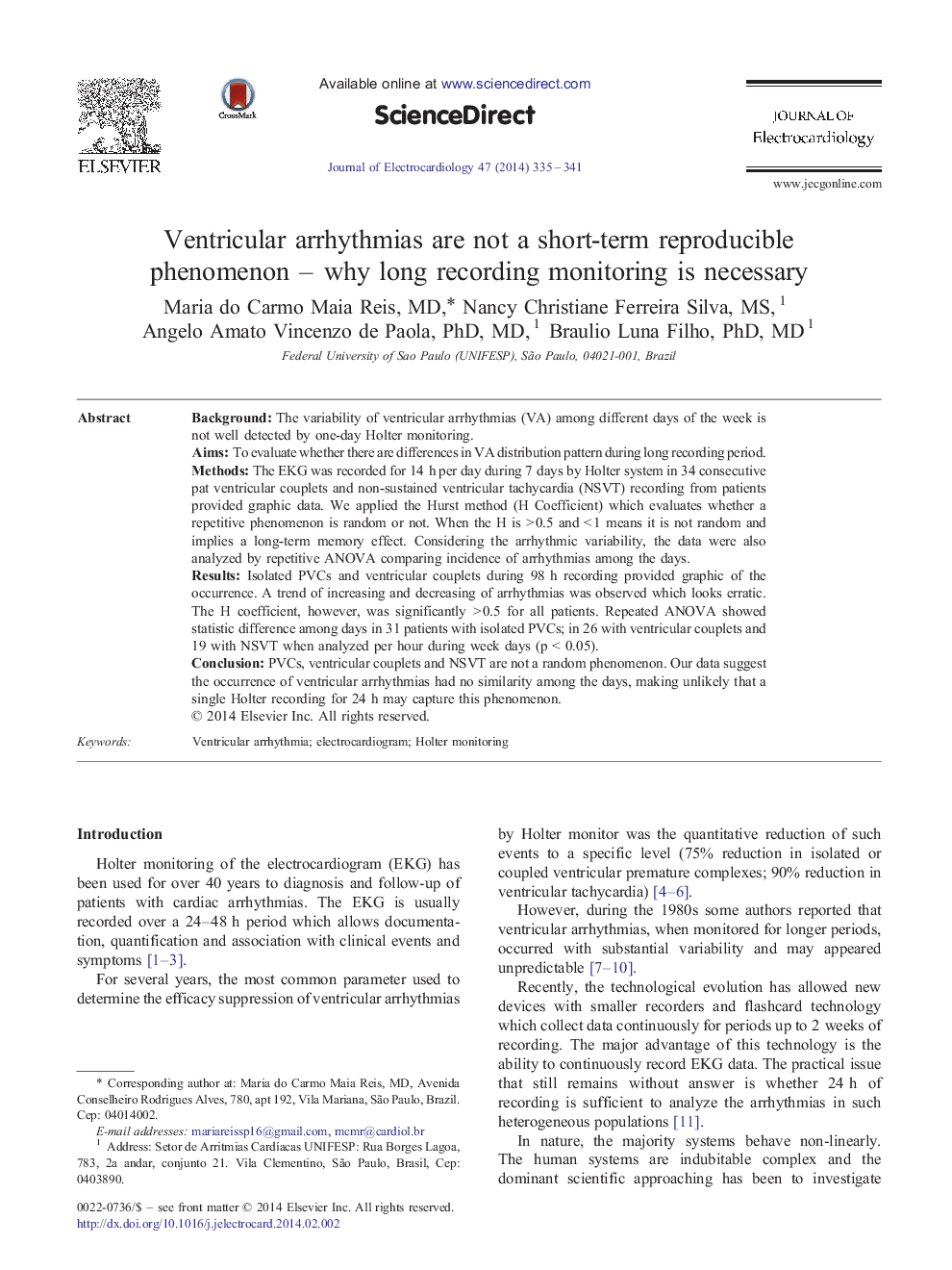| Article ID | Journal | Published Year | Pages | File Type |
|---|---|---|---|---|
| 2967620 | Journal of Electrocardiology | 2014 | 7 Pages |
BackgroundThe variability of ventricular arrhythmias (VA) among different days of the week is not well detected by one-day Holter monitoring.AimsTo evaluate whether there are differences in VA distribution pattern during long recording period.MethodsThe EKG was recorded for 14 h per day during 7 days by Holter system in 34 consecutive pat ventricular couplets and non-sustained ventricular tachycardia (NSVT) recording from patients provided graphic data. We applied the Hurst method (H Coefficient) which evaluates whether a repetitive phenomenon is random or not. When the H is > 0.5 and < 1 means it is not random and implies a long-term memory effect. Considering the arrhythmic variability, the data were also analyzed by repetitive ANOVA comparing incidence of arrhythmias among the days.ResultsIsolated PVCs and ventricular couplets during 98 h recording provided graphic of the occurrence. A trend of increasing and decreasing of arrhythmias was observed which looks erratic. The H coefficient, however, was significantly > 0.5 for all patients. Repeated ANOVA showed statistic difference among days in 31 patients with isolated PVCs; in 26 with ventricular couplets and 19 with NSVT when analyzed per hour during week days (p < 0.05).ConclusionPVCs, ventricular couplets and NSVT are not a random phenomenon. Our data suggest the occurrence of ventricular arrhythmias had no similarity among the days, making unlikely that a single Holter recording for 24 h may capture this phenomenon.
